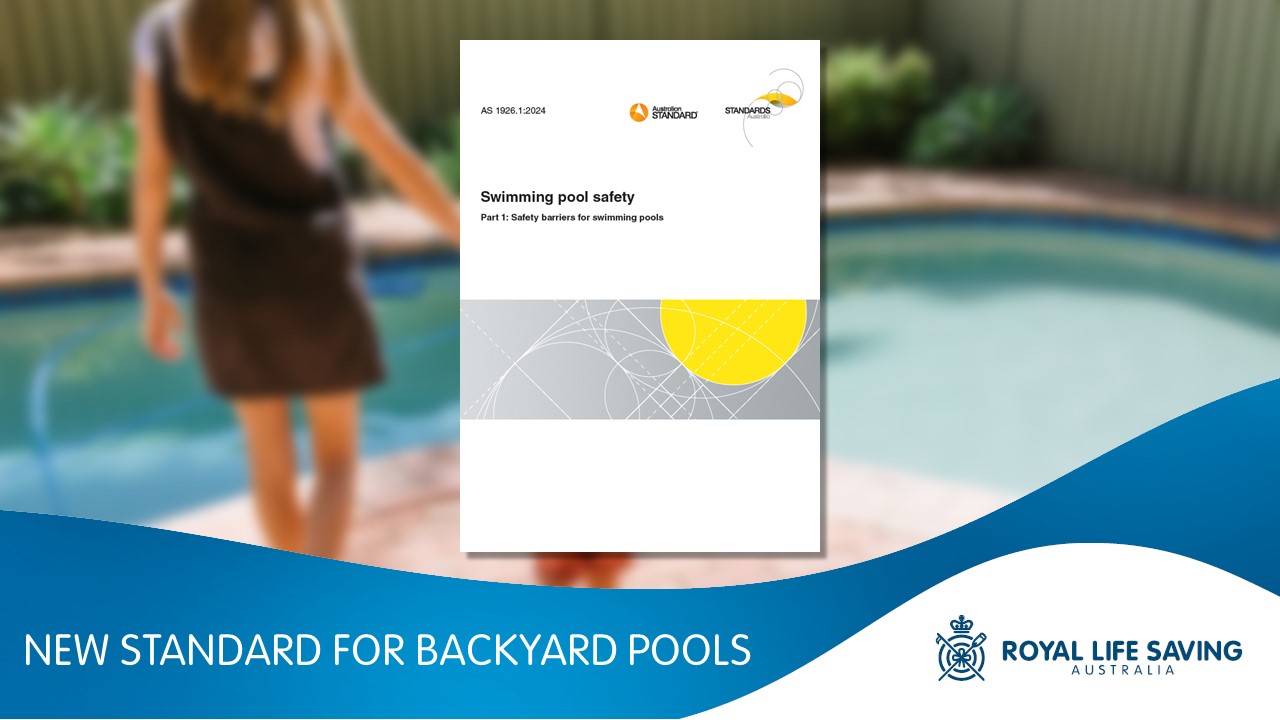Published 3 September 2024

Standards Australia has released a new standard for backyard pools, focusing on safety barriers for swimming pools. This is an important tool in preventing child drowning incidents at home.
"Drowning has long been one of the leading causes of death in children aged 1-4 years," said Justin Scarr, CEO of Royal Life Saving – Australia. "While we've made significant long-term progress in reducing child drowning rates, for every toddler drowning death, approximately eight children are admitted to hospital as a result of non-fatal drowning."
"Child drowning in backyard swimming pools often results from a lapse in supervision, meaning the pool fence and gate is critical", Mr Scarr said.
A recent Royal Life Saving – Australia report shows that between July 2002 and June 2022, 549 children aged 0 to 4 years drowned in Australia. However, the rate of unintentional fatal drowning among children under five has declined by 59%.
Professor John Pearn AO, Royal Life Saving's National Medical Adviser, emphasised the importance of pool fencing.
"The introduction of mandatory fencing for backyard pools in the 90s was a pivotal moment in child safety in Australia," he said.
"Safety barriers around backyard pools have saved thousands of toddlers’ lives in recent decades, but they must be well maintained, and children must always be supervised around water."
Stacey Pidgeon, National Manager – Research and Policy at Royal Life Saving – Australia, added:
"Fatal child drowning has reduced by 59% over the last ten years, however one-year-old toddlers still record the highest fatal drowning rate of any age group, at 3.47 deaths per 100,000 population."
Our research has found significant differences in how pool fencing laws are applied across Australia. Only Victoria and Western Australia currently require regular inspections state-wide, highlighting inconsistencies in regulations and enforcement.
The updated standard introduces several key changes, including new definitions, revised non-climbable zone requirements, improved gate latch and hinge security, and guidelines for combined structures forming barriers. Royal Life Saving - Australia are proud to have been involved in drowning prevention standards development as members of this and other Standards Australia authoring committees for several decades.
Fellow committee member Lindsay McGrath, CEO of the Swimming Pool and Spa Association (SPASA), commented on the importance of the new standard:
"The publication represents a significant milestone after nearly seven years of rigorous work by the committee. This new version helps simplify complex requirements and integrate modern technologies and practices."
While safety barriers are crucial, effective adult supervision is the most critical factor in preventing child drowning.
Through our Keep Watch campaign, we recommend these four key actions:
- Supervise
- Restrict access
- Teach water safety skills
- Learn emergency response techniques
For full details of the updated standard, AS 1926.1:2024, please visit the Standards Australia website.
For more information about Royal Life Saving's Keep Watch campaign, visit www.royallifesaving.com.au/keepwatch.
